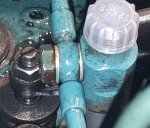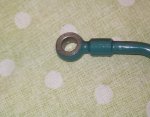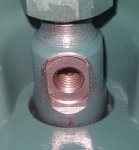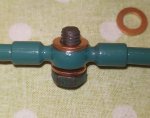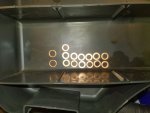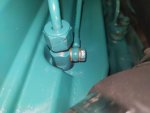joae
Member
Having problems in getting the return connection on the injectors to seal properly.
Problem occured when injector hade been removed and refitted and I then loosened the injectors in order for them to line up properly with the return rail. This improved the seal but not completely.
So now I am using new copper seals and thigthen the screws as much as I dare but it is still a slight leak on 2-3 injectors.
Anyone been there and know how to fix. This should be super simple with clean surfaces and new washers...
Problem occured when injector hade been removed and refitted and I then loosened the injectors in order for them to line up properly with the return rail. This improved the seal but not completely.
So now I am using new copper seals and thigthen the screws as much as I dare but it is still a slight leak on 2-3 injectors.
Anyone been there and know how to fix. This should be super simple with clean surfaces and new washers...

